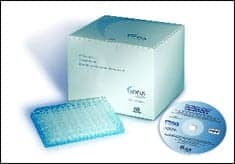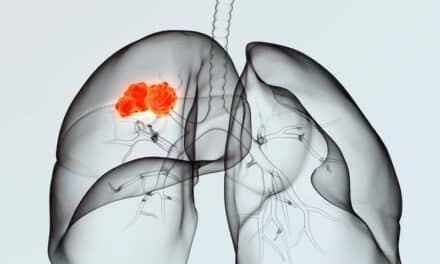 |
Getting the right answer. That is the challenge facing the field of serology—the diagnostic identification of antibodies in blood serum by measuring the concentrations of analytes—says Jack Zakowski, PhD, FACB, director of scientific affairs at Beckman Coulter Inc, Fullerton, Calif.
Specificity and the assay range are key. “Since what is being measured is the body’s response when it thinks it is being attacked, whether from pathogens, microorganisms, or injuries, you need an assay able to measure a broad range,” Zakowski says. “Often, there is a low level of a particular analyte in the body normally, but when the body perceives it is being attacked, we see huge levels that are hard to measure. On the other hand, you often need to be able to detect very low levels of a certain antibody, such as Cardiac C-Reactive Protein. So you need an assay with a broad range.”
According to Zakowski, Beckman Coulter’s serology panels can work with a broad range, from extremely high to extremely low levels, and offer precision, sensitivity, and accuracy. The company has offered serology assays for approximately 20 years, and it is constantly developing and improving them. The newest offer better precision, sensitivity, and specificity, and are able to work on general chemistry panels as well as with a dedicated protein.
Performing Across Instrument Platforms
Since Beckman Coulter designs both its reagents and its instruments, patient results are consistent across instrument platforms, regardless of testing volume, Zakowski says. Its reagents and assays are packaged to run on all UniCel instruments and are formulated with similar assay protocols. Therefore, for example, equivalent patient results will occur from a test run on the midvolume UniCel DXC 600 Synchron Clinical System in a satellite lab and then will run again later at the hospital lab on the high-volume UniCel DxC 880i.
“The people who are designing the reagents are literally just down the hall from those designing instruments,” Zakowski says. “It’s a synergistic collaboration.”
In addition, the new UniCel DXC 880i modular, the UniCel Closed-Tube Aliquotter, serves as a single point of entry for the new automated integrated chemistry and immunoassay system, helping to protect sample integrity by minimizing the risk of human error.
The most recent advance is measurement of Cardiac C-Reactive Protein (CRP), which aids in the evaluation of stress, trauma, infection, inflammation, surgery, and associated diseases.
Blood levels of High Sensitivity Cardiac C-Reactive Protein (CRPH) rise rapidly from normal baseline levels of <0.3 mg/dL3 to as high as 50 mg/dL4 as part of the body's inflammatory response to infection injury, according to the Annals of Internal Medicine.1 Measuring CRPH is now used to assess cardiac events and risk, as well as a sensitive marker of acute inflammation. It also can help with identifying individuals at risk for future cardiovascular disease.
“We are now able to measure CRP at lower and lower levels,” Zakowski says. “We learned that even low levels of CRP could be indicative of cardiac risk, and we wanted to offer a reagent that was designed to measure these low levels.”
The CRPH reagent was introduced last November and is now routinely used in hospital-based clinical labs and reference labs as part of a patient’s cardiac risk assessment. It takes 3 to 15 minutes to obtain results.
Rate turbidity determines the CRP in serum or plasma when the CRPH reagent is used in conjunction with the SYNCHRON LX PRO System, UniCel DxC 600/800 Systems, and the SYNCHRON System Cal 5 Plus. The CRPH reagent is based on the highly sensitive near infrared particle immunoassay rate methodology. The system automatically proportions the appropriate sample and reagent volumes into a cuvette at 37°C. In the reaction, an anti-CRP antibody-coated particle binds to CRP in the patient sample, resulting in the formation of insoluble aggregates, causing turbidity.
The system monitors the change in absorbance, which is proportional to the concentration of CRP in the sample, and is used by the system to calculate and express CRP concentration based upon a single-point adjusted, predetermined calibration curve.
 |
| Syphilis kit from Trinity Biotech. |
Running Interference: Advances in Neonatal Testing
Trinity Biotech, headquartered in Ireland and with offices throughout the United States, relaunched its Captia™ Syphilis-M Capture ELISA in July 2008 to help clinicians get the right answer when diagnosing congenital syphilis—a condition neonates inherit from their mothers. The only way to diagnose congenital syphilis is with an immunoglobulin M (IgM)-only test, as IgM antibodies do not cross the placenta. Traditionally, this testing has not been able to address the problem of interference, both specific and nonspecific.
According to Ron Cruver, marketing manager of immunodiagnostics at Trinity Biotech, the Syphilis-M Capture is able to detect IgM antibodies by employing IgM capture technology.
“Most enzyme immunoassays (EIAs) are indirect IgM ELISA and are prone to interference from patient cospecific immunoglobulin G (IgG) antibodies and from patient rheumatoid factor (RF),” Cruver says. “Our capture technology eliminates the possibility of false positives from interference from RF and false negatives from interference from cospecific IgG.”
Trinity’s new product, the only FDA-cleared syphilis-IgM kit on the US market, binds all the patient’s IgM-class antibodies, so that during the sample incubation phase only patient IgM antibody is bound to the solid phase. Cospecific patient IgG antibody and patient RF do not react with the anti-IgM and are washed from the test well after the sample incubation. The kit’s conjugate component is specific for syphilis and attaches only to anti-syphilis IgM antibodies. IgM antibodies are then visualized by the addition of the kit’s enzyme substrate.
No sample pretreatment cuts down on cost and time, while automation using open ELISA systems avoids the expense of dedicated equipment and increases efficiency. Color-coded liquid reagents are simple to use and reduce error, as does the instrument reading, which is fast, objective, and accurate, decreasing subjective interpretation and transcription errors.
“By providing additional clinical information (the presence or absence of IgM), our product helps the physician differentiate a past infection from a current or recent infection,” Cruver says.
Used in hospital, reference, and public health laboratories, the test is cleared for use on serum. Total incubation time is 21/2 hours, with the entire assay taking just under 3 hours, allowing for washing and pipetting.
 |
| The Plexus(TM) kit is used in diagnosing EBV infections. |
Focus on Epstein-Barr: Multiplexed Immunoassays
Focus Diagnostics Inc, Cypress, Calif, received FDA clearance in September for its two new Plexus™ Epstein-Barr Virus (EBV) Multi-Analyte Diagnostics serology test kits for detecting the presence or absence of IgG and IgM antibodies in blood serum. The two tests are used to help diagnose EBV infection and EBV-associated infectious mononucleosis, and to help determine whether the infection is acute or stems from recent or past exposure to EBV.
The Plexus EBV IgM panel identifies the presence of viral capsid antigen (VCA) IgM and heterophile antibodies, which are associated with acute or recent EBV infection. The Plexus EBV IgG panel identifies the presence of VCA IgG, early antigen-diffuse (EA-D), and nuclear antigen (EBNA-1), which are associated with past EBV infections.
According to Nancy Schneider, director of diagnostics marketing at Focus Diagnostics, EBV infections are common throughout the world and cause a wide range of diseases of varying severity. The most common and best-known of these EBV-associated diseases in developed countries is infectious mononucleosis. Detecting the IgM and IgG antibodies and identifying whether they are from recent or past exposure to the virus can help correctly diagnose acute mononucleosis. Accurate diagnosis of EBV-associated infectious mononucleosis can be difficult without serological testing to detect specific antigens and antibodies.
“The biggest obstacle is finding the right antibodies and antigens so the test is capable of getting excellent sensitivity and specificity,” Schneider says.
Done on serum, the tests, performed in hospital and commercial labs, can be performed simultaneously, rather than performed singly as ELISAs, Schneider says. “We looked at what is beyond ELISA, which was multiplexing, and wanted to make sure it made sense for doctors. Now, tests can be combined and results can be obtained in a couple of hours, rather than in a day. They give better staging and better answers quicker.”
The EBV panels are the company’s latest multiplex immunoassay products, following the Plexus HerpeSelect® 1 and 2 IgG test kit, which received FDA clearance in 2007.
The Plexus Multi-Analyte Diagnostics line of multiplex infectious-disease assays uses Luminex® xMAP® technology, and has been specifically designed to correspond with laboratory tests that physicians might order to help them diagnose specific infections. Specially designed Plexus software runs on Luminex-based analyzers and allows the laboratory to report results for the entire panel or only for specific assays.
“We were looking in the marketplace for tests that work together,” Schneider explains. “We matched the ordering patterns of physicians with tests that fit with what we do, which is infectious disease.”
Lyme Borreliosis—New FDA-Cleared Assay
Bio-Rad Laboratories, Hercules, Calif, launched its new Platelia™ Lyme IgM and IgG in August after receiving FDA clearance in July. The two-step assays use, respectively, immunocapture and indirect ELISA formats to help clinicians diagnose Lyme borreliosis—a noncontagious infection caused by Borrelia burgdorferi sensu lato and transmitted by ticks. According to the European Society of Clinical Microbiology and Infectious Diseases, it is the most prevalent tick-borne zoonosis and is considered as an important emerging infection in Europe, North America, and the Far Eastern countries. Due to limitations of direct detection, antibody screening remains the mainly used method to support a clinical diagnosis.
“Bio-Rad’s new Platelia Lyme assays offer improved detection for lyme borreliosis at all stages of the disease,” says Christina Marshall, sales product manager. “By using our tests for both IgM and IgG and combining their results, customers will see increased sensitivity.”
The EIA tests are qualitative and can be used to test serum or plasma from patients with a history and symptoms of infection with Borrelia burgdorferi sensu lato. They run on instrumentation with 96 wells per plate, and use common reagents and incubation protocols as well as standardized protocols to run both assays in parallel.
According to Marshall, combining results also offers labs improved efficiency and better patient management.
Shannon Rose is a freelance health and medical writer based in Temecula, Calif.
Reference
- Hind CRH, Pepys PM. The role of serum C-reactive protein in clinical practice. Ann Intern Med. 1984;5:112-151.





